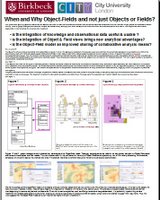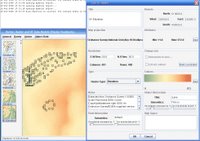Mind Tools Newsletter presents 3 ways of decision making processes:
Multivoting
The democratic system of majority wins is usually a fair way to make a decision. So long as voters have sufficient information on which to make a choice, the system usually works well, just as long as there are only a few options from which to choose.But what happens when the choices expand and each vote is then dispersed over a wider range? A winner emerges but there are many more people who didnt vote for the winning option than people who did.
When there are many choices, simple majority rule voting is often not the best method for reaching decisions, if you want everyone to feel that they own the decision. Yet with idea sharing and brainstorming activities frequently taking place in workplaces today, voting is needed more and more. This is particularly the case where the decision is subjective, where different strong views are held, where many members of the group have power, or where strong commitment to the outcome is needed.
When group consensus is needed, multivoting is a simple process that helps you whittle down a large list of options to a manageable number. It works by using several rounds of voting, in which the list of alternatives becomes shorter and shorter. If you start with 10 alternatives, the top five may move to the second round of voting, and so on.
In addition, in all but the last round, each person has more than one vote, allowing them to indicate the strength of their support for each option. Everyone votes in each cycle, so more people are involved in approving the final outcome than if only one vote was held.
Multivoting helps group members narrow down a wide field of options so that the group decision is focused on the most popular alternatives. This makes reaching consensus possible, and gives an outcome that people can buy into.
Delphi Method
It’s a common observation to say that when you get three experts together, you’ll often end up with four different opinions. This is particularly the case in areas (such as resource allocation and forecasting) where the conclusion reached depends on a number of subjective assessments. Arguments can quickly become passionate, and disagreement can often become intensely personal and bitter.
More than this, in face-to-face discussion, situations of “groupthink” can occur. Here (for example) the eccentric views of early or charismatic speakers can achieve undue prominence as the group seeks to find consensus. This can lead to poor decision making.
Leadership
Excellence!
Learn how to master the stresses that come with a successful, high-powered career...
With Mind Tools' "How to Lead: Discover the Leader Within You", learn the 48 essential skills needed to be a highly effective and well-respected leader.
This is where a technique like the Delphi Method is needed to reach a properly thought-through consensus among experts.
The Delphi Method is a structured approach to problem analysis which makes sure that problems and proposed solutions are thoroughly explored and examined.
By using a remote and anonymous approach, it avoids the problems of groupthink and personality conflict that can lead to poor group decision making. More than this, it allows the time for detailed analysis and careful criticism that so often is not possible within a group analysis and decision making process.
The process works through a number of cycles of anonymous written discussion and argument, managed by a facilitator. The facilitator controls the process, and manages the flow and consolidation of information.
Nominal Group Technique
When a group meets, it’s often the case that people who shouts loudest, or those with higher status in the organization, get their ideas heard more than others. So when it comes to gaining consensus on important decisions or priorities, how do you make sure you get true consensus and a fair decision for the group?
One technique to help with this is the Nominal Group Technique, a face-to-face group process technique for gaining consensus. A typical application is in organizational planning when a group needs to agree priorities in order to assign resources and funds.
The benefit of the technique is that the group shares and discusses all issues before evaluation, with each group member participating equally in evaluation. The evaluation works with each participant “nominating” his or her priority issues, and then ranking them on a scale of, say, 1 to 10.
See http://www.mindtools.com/pages/main/newMN_TED.htm for details
Smoke & Mirrors (or What The Pink Panther Can Teach Us About the Market
Meltdown)
-
What a week! Last week began with an almost unprecedented plunge in global
stockmarkets that stretched from Hong Kong to Frankfurt (and places in
between) ...
16 years ago






